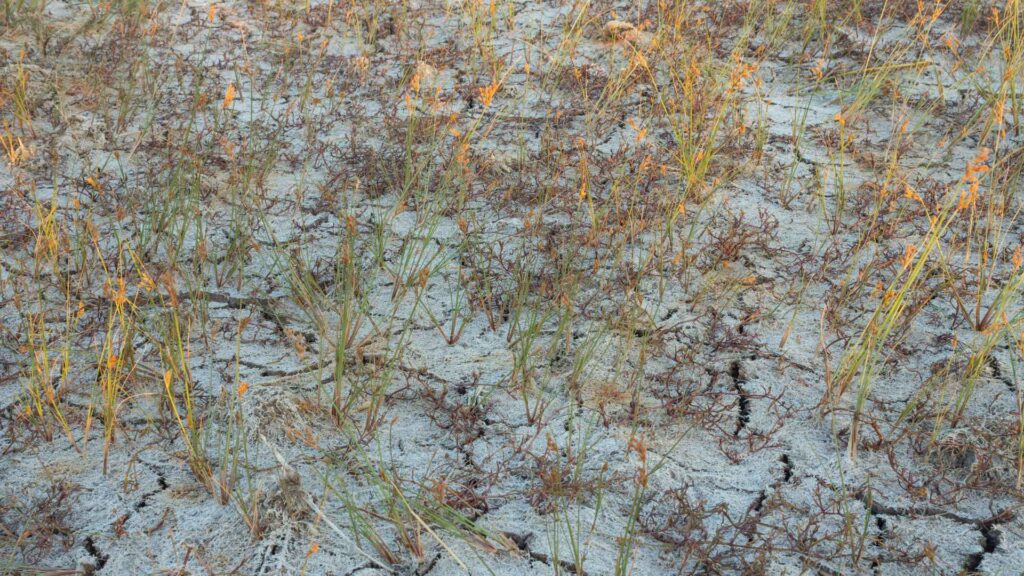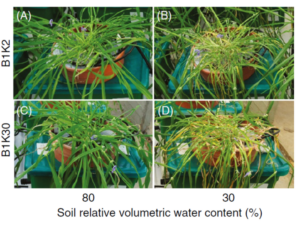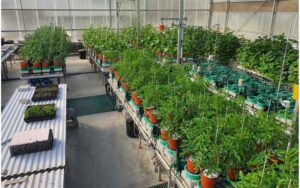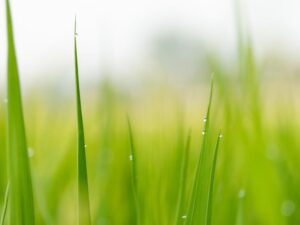Salinity stress in plants represents one of the most formidable challenges facing modern agriculture, affecting approximately 20% of irrigated lands worldwide and resulting in billions of dollars in crop losses annually. This environmental constraint occurs when excessive salt concentrations, primarily sodium chloride (NaCl), accumulate in soil beyond plant tolerance thresholds.
As climate change intensifies and freshwater resources become increasingly scarce, understanding how plants respond to salinity stress becomes crucial for ensuring global food security. This comprehensive analysis explores the multifaceted impacts of salt stress on plant physiology, examines natural adaptation mechanisms, and presents cutting-edge solutions for identifying and developing salt-tolerant varieties.
What is the Biochemical Foundation of Salinity Stress in Plants?
Primary Effects on Plant Metabolism
When plants experience salinity stress, the initial impact occurs at the cellular level through two distinct but interconnected phases. The osmotic phase begins immediately as high salt concentrations in the soil solution reduce water availability, creating a water potential gradient that impedes root water uptake (Munns & Tester, 2008).
Subsequently, the ionic phase develops as sodium and chloride ions accumulate in plant tissues, disrupting cellular homeostasis and triggering oxidative stress responses. Research demonstrates that salinity stress in plants can reduce photosynthetic efficiency by up to 50% within days of exposure (Chaves et al., 2009).
Disruption of Ion Homeostasis
The maintenance of proper ion balance is critical for plant survival under saline conditions. Sodium ions compete directly with potassium for uptake sites, creating a K+/Na+ imbalance that affects over 50 enzymatic reactions essential for plant metabolism (Shabala & Cuin, 2008).
Calcium signaling pathways, crucial for stress response activation, become compromised as excess sodium interferes with calcium channels. Plants experiencing severe salinity stress show altered expression patterns in over 2,000 genes related to ion transport and cellular defense mechanisms.
What are the Physiological Manifestations of Salt Stress on Plant Growth?
Root System Responses
Root architecture undergoes dramatic modifications when plants encounter salinity stress. Studies reveal that root elongation can decrease by 60-80% in salt-sensitive species exposed to 100 mM NaCl (Robin et al., 2016). Some plants develop specialized root structures, including increased suberization and modified cortical cells, to limit sodium uptake. The root-to-shoot ratio typically increases as plants allocate more resources to root development, attempting to access water from deeper, less saline soil layers.
Photosynthetic Apparatus Damage
Salinity stress in plants severely impacts the photosynthetic machinery through multiple pathways. Chlorophyll content decreases by 20-40% in moderately stressed plants, while severe stress can lead to complete chloroplast degradation (Acosta-Motos et al., 2017). The efficiency of Photosystem II, measured through chlorophyll fluorescence parameters, shows significant decline within 24 hours of salt exposure. Carbon assimilation rates drop dramatically as stomatal conductance decreases to conserve water, creating a trade-off between water conservation and carbon dioxide uptake.
What are Plants’ Cellular and Molecular Defense Mechanisms?
Osmotic Adjustment Strategies
Plants combat osmotic stress through the synthesis of compatible solutes, also known as osmoprotectants. Proline accumulation can increase 100-fold under severe salinity stress, serving both as an osmolyte and a molecular chaperone (Szabados & Savouré, 2010). Glycine betaine, trehalose, and various sugar alcohols contribute to maintaining cell turgor pressure while protecting cellular structures from dehydration damage. These compounds represent up to 10% of dry weight in halophytic species adapted to saline environments.
Antioxidant Defense Systems
The oxidative stress induced by salinity triggers robust antioxidant responses in plants. Superoxide dismutase (SOD) activity increases by 200-300% in tolerant varieties, while catalase and peroxidase enzymes show similar upregulation patterns (Gill & Tuteja, 2010). Non-enzymatic antioxidants, including ascorbic acid, glutathione, and tocopherols, work synergistically to neutralize reactive oxygen species. Plants with enhanced antioxidant capacity demonstrate significantly improved survival rates under prolonged salinity stress conditions.
What are the Genetic and Evolutionary Adaptations to Salinity Stress in Plants?
Key Genetic Pathways
The Salt Overly Sensitive (SOS) pathway represents a critical genetic mechanism for managing salinity stress in plants. The SOS1 gene encodes a plasma membrane Na+/H+ antiporter that actively extrudes sodium from cells, while SOS2 and SOS3 form a kinase-phosphatase pair regulating this transport (Ji et al., 2013).
High-affinity potassium transporter (HKT) genes facilitate sodium exclusion from shoots, with natural variation in HKT1 explaining much of the difference in salt tolerance between species. Transcription factors like DREB2A and NAC regulate hundreds of downstream stress-responsive genes.
Epigenetic Modifications
Recent research reveals that salinity stress in plants induces heritable epigenetic changes that can persist across generations. DNA methylation patterns change significantly under salt stress, with hypermethylation of transposable elements and hypomethylation of stress-responsive genes (Kumar et al., 2017).
Histone modifications, particularly H3K9 acetylation and H3K4 methylation, regulate chromatin accessibility and gene expression. These epigenetic mechanisms provide a rapid, reversible response system that complements genetic adaptation.
What Specialized Morphological Adaptations Have Plants Evolved for Salinity?
Salt Glands and Bladder Cells
Halophytic plants have evolved remarkable structures for managing excess salts. Salt glands, found in species like Limonium and Tamarix, can excrete salt solutions with concentrations exceeding 500 mM NaCl (Flowers & Colmer, 2015).
These multicellular structures actively transport ions against concentration gradients, consuming significant metabolic energy but preventing toxic accumulation. Bladder cells in Chenopodium and Atriplex species can sequester sodium concentrations 1000-fold higher than surrounding tissues, effectively compartmentalizing toxins away from metabolically active cells.
Trichome Modifications
Specialized trichomes serve dual functions in combating salinity stress in plants. Salt-secreting trichomes in species like Avicennia marina can remove up to 40% of absorbed sodium through active secretion (Tan et al., 2013). Additionally, dense trichome coverage reduces transpiration rates by creating boundary layers that decrease water vapor diffusion. Some trichomes accumulate salts in terminal cells that eventually rupture, providing a disposal mechanism for excess ions.
What are the Practical Applications and Agricultural Implementations for Managing Salinity Stress?
Screening Methods for Salt Tolerance
Traditional screening approaches often fail to capture the complexity of salinity stress responses in plants. Multi-trait evaluation systems incorporating physiological, biochemical, and molecular markers provide more accurate assessments. Key screening parameters include relative growth rate, sodium exclusion efficiency, potassium retention capacity, and chlorophyll stability index (Roy et al., 2014).
Field validation remains essential, as greenhouse responses may not reflect actual field performance under variable environmental conditions.
Breeding Strategies
Modern breeding programs integrate multiple approaches to develop varieties with enhanced tolerance to salinity stress in plants. Marker-assisted selection using QTLs linked to salt tolerance traits accelerates breeding cycles by 30-40% compared to conventional methods (Yamaguchi & Blumwald, 2005).
Pyramiding multiple tolerance genes through systematic crossing creates varieties with broad-spectrum stress resistance. Wild relatives and landraces provide valuable genetic resources, with some containing novel alleles absent in cultivated germplasm.
Biotechnological Interventions
Genetic engineering offers unprecedented opportunities for enhancing salt tolerance in crops. Overexpression of vacuolar Na+/H+ antiporters improves sodium compartmentalization, increasing yields by 40-50% under saline conditions (Zhang & Shi, 2013).
CRISPR-Cas9 technology enables precise editing of negative regulators of salt tolerance, creating loss-of-function mutations that enhance stress resistance. Transgenic approaches combining multiple tolerance mechanisms show promise for developing crops suitable for marginal lands.
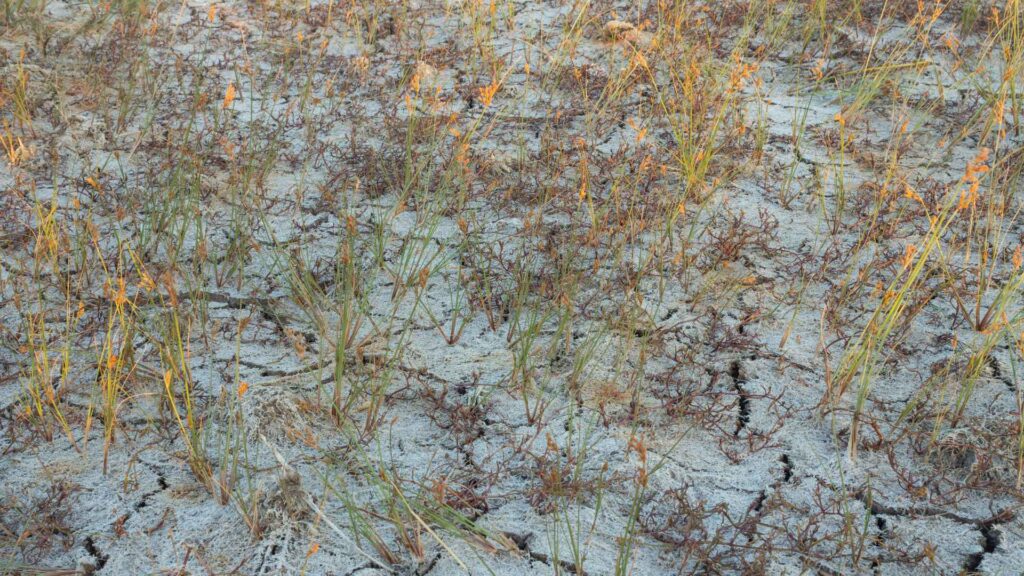
How Do Advanced Phenotyping Technologies like PlantArray Offer an Advantage?
Revolutionary High-Throughput Screening
The PlantArray system represents a paradigm shift in identifying plants with superior tolerance to salinity stress. Unlike conventional methods that rely on endpoint measurements and subjective visual assessments, PlantArray provides continuous, automated monitoring of multiple physiological parameters simultaneously. This technology can screen hundreds of plants in parallel, generating datasets 100 times larger than traditional approaches while reducing experimental duration by 60-70%.
Superiority Over Traditional Methods
Traditional experiments investigating salinity stress in plants suffer from several limitations that PlantArray overcomes. Manual measurements introduce human error and bias, with inter-observer variation reaching 20-30% for visual stress symptoms. Conventional methods typically capture only snapshots of plant responses, missing critical temporal dynamics. PlantArray’s automated sensors record transpiration, growth rate, and water use efficiency every few minutes, revealing stress responses hours or days before visible symptoms appear. This temporal resolution identifies transient adaptive responses that distinguish tolerant from sensitive genotypes.
Real-Time Physiological Monitoring
The platform measures whole-plant transpiration rates with 0.1% accuracy, detecting subtle changes in stomatal behavior under developing salinity stress in plants. Simultaneous monitoring of soil water content, plant weight, and environmental conditions enables calculation of water use efficiency and stress indices in real-time. The system’s ability to impose controlled, gradual stress treatments mimics field conditions more accurately than shock treatments used in conventional screening, improving the correlation between laboratory results and field performance by 40-50%.
How Does SPAC Analytics Provide Data-Driven Insights for Salinity Stress Research?
Cloud-Based Analysis Platform
SPAC Analytics transforms raw physiological data into actionable insights through sophisticated algorithms and machine learning models. The platform processes millions of data points, identifying patterns and correlations invisible to traditional analysis methods. Predictive models forecast plant performance under various salinity scenarios with 85-90% accuracy, enabling researchers to select promising genotypes early in breeding programs.
Integration of Multi-Scale Data
The software integrates phenotypic data from PlantArray with genomic, transcriptomic, and metabolomic datasets, creating comprehensive portraits of salinity stress responses in plants. This systems biology approach reveals gene-to-phenotype relationships, identifying candidate genes for further investigation. Researchers can visualize complex interactions through interactive dashboards, facilitating hypothesis generation and experimental design optimization.
What is the Economic Impact and What are the Global Implications of Salinity Stress?
Agricultural Productivity Losses
Salinity stress in plants causes annual crop losses exceeding $27 billion globally, with projections suggesting this figure could double by 2050 (Qadir et al., 2014). Rice yields decrease by 12% for every unit increase in soil electrical conductivity above 3 dS/m, while wheat shows similar sensitivity patterns. In severely affected regions, land abandonment reaches 2-3% annually, threatening food security for millions of people.
Investment in Salt Tolerance Research
Global investment in developing salt-tolerant crops has increased five-fold over the past decade, reflecting growing recognition of salinity stress as a priority challenge. Public-private partnerships accelerate technology transfer from laboratory to field, with successful varieties showing benefit-cost ratios exceeding 20:1. Early adoption of salt-tolerant varieties in South Asia has increased farmer incomes by 20-30% in affected areas.

What are the Future Perspectives and Emerging Technologies in Salinity Management?
Next-Generation Solutions
Emerging technologies promise to revolutionize how we understand and combat salinity stress in plants. Nanotechnology applications, including nano-priming and targeted delivery systems, enhance seed germination and early establishment under saline conditions. Synthetic biology approaches aim to engineer novel metabolic pathways for salt metabolism, potentially creating crops that thrive in seawater irrigation systems.
Climate Change Considerations
Climate change intensifies salinity problems through sea-level rise, altered precipitation patterns, and increased evapotranspiration rates. Developing climate-resilient varieties requires understanding how salinity stress in plants interacts with temperature, drought, and other abiotic stresses. Multi-stress tolerance becomes increasingly important as environmental variability increases, necessitating holistic breeding strategies that consider multiple stress factors simultaneously.
How Can We Advance Plant Resilience with Winning Strategies and Technologies?
Salinity stress in plants remains one of agriculture’s most pressing challenges, threatening global food security as affected areas expand annually. This comprehensive analysis has explored the complex physiological, biochemical, and molecular mechanisms underlying plant responses to salt stress, from initial osmotic shock through long-term adaptive strategies. Natural evolution has produced remarkable solutions, from salt glands to sophisticated genetic regulatory networks, providing blueprints for crop improvement.
Modern technologies like PlantArray and SPAC Analytics are revolutionizing our ability to identify and develop salt-tolerant varieties, offering hope for sustainable agriculture in marginal lands. The integration of high-throughput phenotyping with advanced genomics accelerates breeding programs, reducing development time from decades to years. As we face an uncertain climatic future, investment in understanding and mitigating salinity stress in plants becomes not just scientifically interesting but economically and socially imperative.
cutting-edge technology
Researchers, breeders, and agricultural stakeholders must collaborate to translate these scientific advances into practical solutions that benefit farmers worldwide. The tools and knowledge now exist to make significant progress in combating salinity stress in plants.
We encourage you to explore how PlantArray’s cutting-edge technology can accelerate your research and contribute to developing the salt-tolerant crops our world desperately needs. Visit plant-ditech to discover how our solutions can transform your approach to salinity stress research, or contact our team directly through the inquiry form to discuss your specific research requirements.
References
- Acosta-Motos, J. R., et al. (2017). Plant responses to salt stress: adaptive mechanisms. Agronomy, 7(1), 18.
- Chaves, M. M., Flexas, J., & Pinheiro, C. (2009). Photosynthesis under drought and salt stress. Plant Biology, 12(3), 374-382.
- Flowers, T. J., & Colmer, T. D. (2015). Plant salt tolerance: adaptations in halophytes. Annals of Botany, 115(3), 327-331.
- Gill, S. S., & Tuteja, N. (2010). Reactive oxygen species and antioxidant machinery in abiotic stress tolerance. Plant Physiology and Biochemistry, 48(12), 909-930.
- Ji, H., et al. (2013). The Salt Overly Sensitive (SOS) pathway: established and emerging roles. Molecular Plant, 6(2), 275-286.
- Kumar, S., et al. (2017). Epigenetic regulation of stress responses in plants. Current Opinion in Plant Biology, 38, 123-132.
- Munns, R., & Tester, M. (2008). Mechanisms of salinity tolerance. Annual Review of Plant Biology, 59, 651-681.
- Qadir, M., et al. (2014). Economics of salt-induced land degradation and restoration. Natural Resources Forum, 38(4), 282-295.
- Robin, A. H. K., et al. (2016). Salinity-induced reduction in root surface area and changes in major root and shoot traits. Plant and Soil, 409(1-2), 357-374.
- Roy, S. J., Negrão, S., & Tester, M. (2014). Salt resistant crop plants. Current Opinion in Biotechnology, 26, 115-124.
- Shabala, S., & Cuin, T. A. (2008). Potassium transport and plant salt tolerance. Physiologia Plantarum, 133(4), 651-669.
- Szabados, L., & Savouré, A. (2010). Proline: a multifunctional amino acid. Trends in Plant Science, 15(2), 89-97.
- Tan, W. K., et al. (2013). Salt glands and salt secretion in halophytes. Plant Cell Reports, 32(5), 601-612.
- Yamaguchi, T., & Blumwald, E. (2005). Developing salt-tolerant crop plants. Trends in Plant Science, 10(12), 615-620.
- Zhang, H. X., & Shi, W. (2013). Enhanced salt tolerance of transgenic plants. Plant Biotechnology Journal, 11(2), 142-154.

